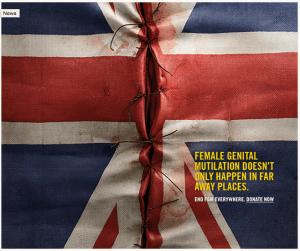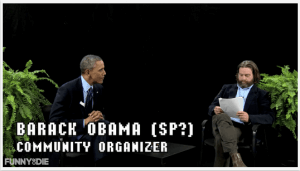For the first time in recent history the CLIO Awards integrated Healthcare into the overall show. As an Executive Jury participant, it feels like an epic moment, not just because we had some really strong work to debate again this year, but because in the context of the entire show, health, if not healthcare specifically, was well-represented globally. The CLIO Awards are getting healthier.
It is long overdue that the creative industries take on healthcare and apply its vast wealth of talent to help solve the world’s health problems. Kudos to CLIO for leading the charge in contextualizing the work within the industry. With the integration of healthcare into the show this year we achieve not only the recognition of great work but more importantly, how this work stacks up to other health and wellness work not submitted into the healthcare category. Work such as the simple, powerful project for 28 Too Many is brilliant for its insight and simplicity and absolutely riveting execution. It achieves in a series of deceptively simple images what a 50-page website could never do. I say this not in disregard to the power of digital but in homage to the incredible power of an idea that succeeds because of its intelligence and its sparseness.
In an age when it often feels that one surefire path to an award is to orchestrate an event, film that event and then share it across social media, the work for 28toomany.org defies present convention. The work is executed with great empathy and delivers a tearful blow to the pride of nations who dare look away… and it does it without relying on the gaming of social media to prove its point. I will suggest this is a very analogue idea — a bit of old school brilliance. I tip my hat.
As an industry, I think we have an obligation to keep health and wellness on the top of the agenda because it benefits all of us and with more of us doing it, the more we’ll get accomplished. The work for 28 Too Many delivers on all fronts, regardless of the category it was entered into.
In my former gig as a founder and chief global creative officer Palio, I traveled the world for both research and creative development. Health and wellness is one of those topics that unites all peoples around the globe and it is one area in which we have many more commonalities than we do differences. Keeping it in a silo only makes it harder. Let’s mix it up, think and behave differently about health and wellness — this is one of the motivations behind my new company Brandforming — to tap the broader talent pool and leap boundaries.
As technology continues to topple old barriers almost as fast as we can name them, it is time to apply the learnings of all the fun and fascinating applications to do some truly heavy lifting and solve real problems, not just for the entertainment value . And with that, let’s consider Lucky Iron Fish, the 2015 Grand CLIO in Healthcare Innovation winner. This work astonishes with its simplicity because Lucky Iron Fish excels not through some fantastic application of technology, but through the power of its cultural insight and a few pennies worth of scrap iron. Another powerful analogue idea. Visit their website and learn their story http://www.luckyironfish.com/
Lucky Iron Fish was developed with great cultural sensitivity that unlocked an insight that placed the Lucky Iron Fish into the heart of every home and improved the quality of health. For this very reason this same work also achieved legendary status at the Cannes Lions Festival earlier this year.
World health data offers the promise of incredible perspective, if not insight, into some really pressing global health challenges. Many of these very same challenges find their way right into our daily lives; yet we persist in acting as if these problems belong to someone else. The recognition this year to Dr. Mickey Chopra, CLIO Healthcare Honorary Award for his service at Unicef as Chief of Health and Associate Director of Programs at UNICEF’s NY headquarters, acknowledges the profound impact he has had in shaping policy into action for maternal, newborn, and child health, immunization, pediatric, HIV/AIDS, and health systems. To Dr. Chopra, we all matter, the world over.
Healthcare advertising and communications have come along way in the U.S. but still has much further to go to achieve the kind of impact these campaigns deliver. The very regulations we rail on about are a trap we set for ourselves when we insist on following the same old well-worn paths. Just because we are allowed to do branded promotion for healthcare brands in the U.S. doesn’t mean it is the only tool in the box. At this point it is abundantly clear that all the advertising and promotion for products here in the U.S. has not done much to improve our health or drive down the cost of healthcare. Americans are not among the healthiest people and as we know all too well, the cost of and access to healthcare has become one of the biggest burdens we face.
I’ll leave us today with another CLIO winner that Heads For The Heart with humor and takes on the Affordable Care Act


